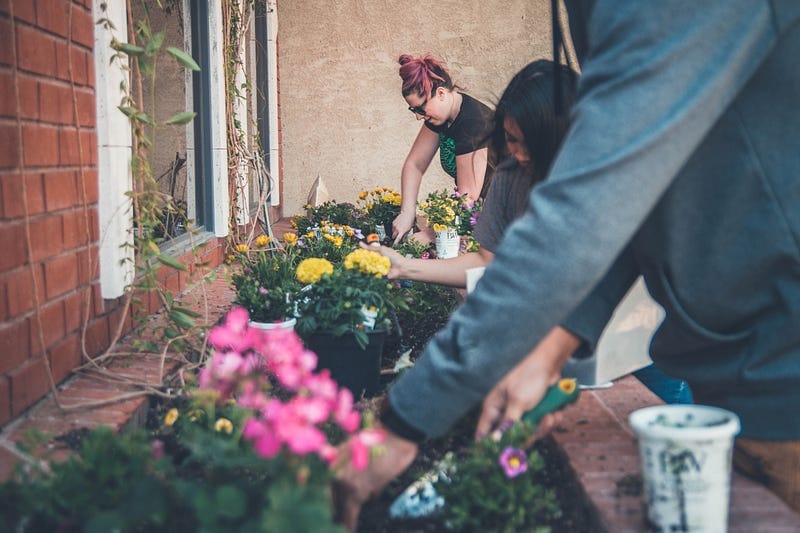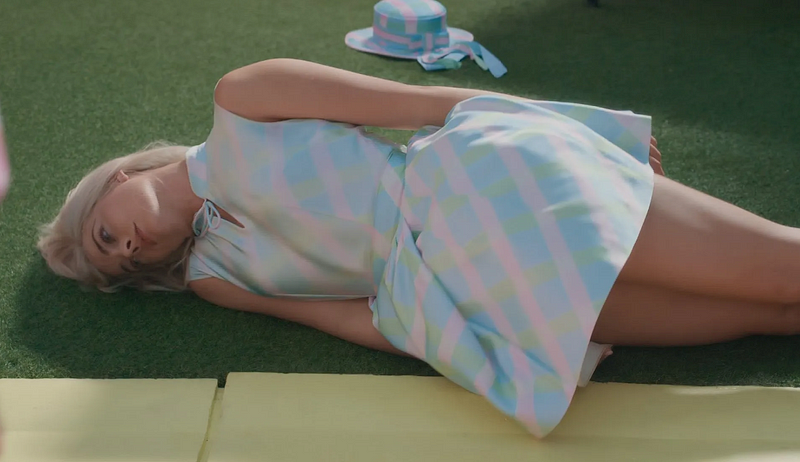Going beyond planting seeds: How I’ve approached building design maturity in the BC Government
I want to go beyond planting seeds. I want to become a gardener.

(Note: This is a very condensed version of a talk that was given at the SD in Gov conference in Edinburgh in September 2022. If you’re interested in the full talk, please email Martha.)
I’m a service designer, and when I first joined government, I came in with high hopes of solving the big problems in society. And we have a lot of big problems in BC: homelessness, systemic racism, climate change and critical healthcare shortages, to name just a few.
We service designers in the BC Government often find ourselves on digital product teams where we solve fairly specific problems with technology. But there’s no website or digital tool that’s going to solve homelessness or systemic racism or climate change or healthcare shortages.
Sometimes this makes me feel powerless. And one way I deal with this is by telling myself that I am planting seeds for change, that by doing good work and asking hard questions, I am setting hypothetical future teams up to work on these issues and build on what I’ve done.
But … sometimes it doesn’t feel like enough. I want to see my work have a difference now, not later.
I want to go beyond planting seeds. I want to become a gardener.
From planting seeds to cultivating design maturity
Once I made the decision to become a gardener, I had to decide what kind of garden I wanted to grow. Something I keep coming back to is our design maturity in the BC Government.
I came to this job by way of the UK Government, where I spent a few years at the Government Digital Service. The user-centred design practice at GDS is very mature — user needs are the focus of the whole organization, everyone plays a role in research, and there are multiple researchers and designers on every team.
The NHS in the UK created a useful design ladder that I used a reference point when thinking about our design maturity here in the BC Government. Based on my experiences in the design community, I believe we’re still quite low in design maturity — we have pockets of design teams, but for the most part, many of our ministries have few or no designers. And at scale, design and user needs aren’t central to our decision making or strategic direction (yet.)
Two of my former colleagues in the UK government, Clara Greo and Kara Kane, wrote, “We’ve found that user-centred design is the best way we know of making services that work for users.” And I agree completely.
I believe the BC government is a long way from being truly user-centred, and design maturity is key to changing this. So, design maturity is the landscape I am focusing my resources on. In my ideal future, the BC Government will be a place where every ministry has many designers who all work collaboratively across organization borders to deliver high quality services that are designed to meet the needs of the people we serve, equitably.
How much impact can one person have?
I’m just one person, in a non-leadership position. I can’t have much impact over a complex organization of 30,000 people.
But rather than feel discouraged about what I can’t do, I’ve been trying to focus on what I can do. For instance:
- I can’t make every ministry hire multiple designs. But I can work to convince my division to hire more designers, and I can help with hiring and mentoring.
- I can’t make break down all silos on my own. But I can bring together the design community and work in the open myself.
- I can’t fix pay grades, hiring processes and job levels. But I can pester our leaders to do this, ask uncomfortable questions, and advocate for equity.
- I can’t make every service team work in a user-centred way. But I can get my team working in this way, and share openly about what worked and what didn’t.
A lot of good things have come from focusing on the things I can do: We’ve hired more designers and researchers in my division, our design community is thriving, and we have a career framework in progress, to name a few. The seeds are growing.

Advice for gardeners
Gardening is hard work. It feels futile sometimes. You’re not doing wrong if you want to give up. If you feel like this, here are some words of wisdom, from me and others:
- Be realistic and optimistic at the same time. You can make a difference, and it will be hard. Both things are true.
- You can’t do this alone. As Dana Chisnell says, you are here to make friends. Be what Laura Yarrow calls a trusted agitator.
- Be opinionated. You can’t change things until you’ve decided what’s important to change.
- Be generous, with your time and wisdom and interpretations.
- Be humble and kind. As Kuba Bartwicki says, don’t act like a digital colonialist.
- Use the words YES and NO strategically. Saying yes to quick wins, even if you don’t feel it’s the right thing to do, can go a long way toward building trust and credibility. Saying no to work that doesn’t serve your purpose can force others to think about whether that work or direction is really necessary. Both can be very powerful.
- Refuse to burn out. Don’t do any unpaid overtime, and if it feels too overwhelming, keep it simple and focus on consistency over perfection.
- Remember that each of us has a right to be here (including me and you.) Your imposter syndrome is a liar.
- And, as Janet Hughes famously said, BE BOLD.
This post was written by Martha Edwards, Service Design Lead with the Exchange Lab.



Comments ()